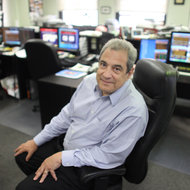After a second offer — on the same terms — in 2010, all but 7 percent of the bonds have been exchanged. But some of the remaining ones were owned by hedge funds that went to court. Last week they won a decision from the United States Court of Appeals for the Second Circuit in New York that has caused considerable concern at institutions like the Treasury Department and the International Monetary Fund.
The decision essentially says that Argentina cannot pay any creditors if it does not pay all of them, and says banks — in the United States and perhaps around the world — could face contempt charges if they allow Argentina to make payments to only those lenders it wishes to pay.
“While we strongly disagree with Argentina’s actions in the international financial arena,” a senior Treasury official, who spoke on the condition of anonymity, said this week, “we have serious concerns that the Second Circuit’s decision will undermine the orderliness and predictability of sovereign debt restructuring and could roll back years of progress.”
The United States government, in a brief filed with the appeals court before it made its decision, urged that it not take the course it ultimately took, warning that the decision could damage the status of New York as a chief world financial center and cause “a detrimental effect on the systemic role of the U.S. dollar” by encouraging countries to denominate their debt in other currencies and put them outside the jurisdiction of United States courts.
The International Monetary Fund, in a paper issued earlier this year, warned that the decision could “risk undermining the sovereign debt restructuring process.”
Such fears were brushed aside in the appeals court decision.
“We do not believe the outcome of this case threatens to steer bond issuers away from the New York marketplace,” said the opinion, written by Judge Barrington D. Parker. “On the contrary, our decision affirms a proposition essential to the integrity of the capital markets: borrowers and lenders may, under New York law, negotiate mutually agreeable terms for their transactions, but they will be held to those terms. We believe that the interest — one widely shared in the financial community — in maintaining New York’s status as one of the foremost commercial centers is advanced by requiring debtors, including foreign debtors, to pay their debts.”
Most international bonds are issued under either New York law or English law. The I.M.F., in its paper, states that under English law bondholders have no rights to file suits. Only the bond’s trustee can do that, and the trustee can be compelled to act only if a large number of bondholders demand it. It was concern that countries would flock to English law that led to the United States government warning that New York’s status as a world financial center could be damaged.
In the past, as the I.M.F. paper noted, it has been easy to get an American court to render a judgment against a country that defaulted on its bonds, but “it has been far more difficult to find assets that can be used to satisfy the judgment.”
That is because a federal law severely limits the assets that bondholders can seek to attach. Diplomatic missions are off limits, as are many other assets. And it is obvious that the courts of the nation that defaulted are not going to help the unfortunate creditors. So having the judgment has in the past proved to be worth very little.
But the appeals court has turned that around, at least in the case of Argentina. It concluded that Argentina is required by the “pari passu” clause that, in one form or another, is standard in bond contracts, to treat all its bondholders alike. So if it pays the interest payments owed on its restructured bonds, it must also pay the money owed on the bonds whose holders refused to restructure. And because those bonds are in default, that means the entire amount of principal and interest is owed and must be paid.
The United States brief says that interpretation of “pari passu” is simply wrong. “The settled understanding of pari passu clauses is that selective repayment does not violate the clause, even if it is the result of sovereign policy,” the brief stated. “This view has been expressed not only by the United States, but by academics, governmental bodies, and market participants.” It noted that similar clauses had not been impediments to debt restructurings in the 1980s and 1990s.
That, in and of itself, would have little effect. Argentina could simply ignore the ruling and continue to make payments on the restructured bonds while ignoring the other ones.

Floyd Norris comments on finance and the economy at nytimes.com/economix.
Article source: http://www.nytimes.com/2013/08/30/business/fears-of-a-precedent-in-argentine-debt-ruling.html?partner=rss&emc=rss


